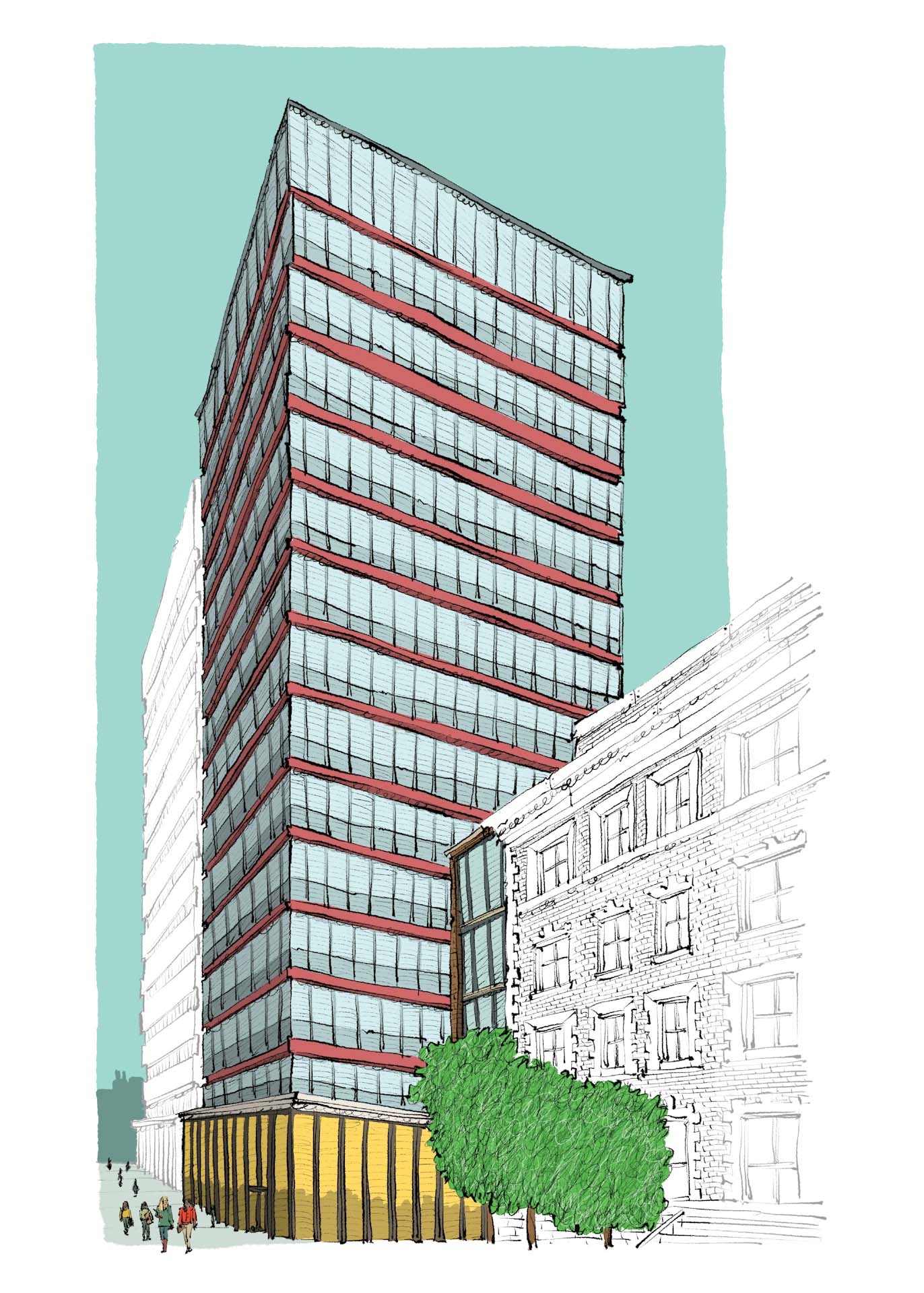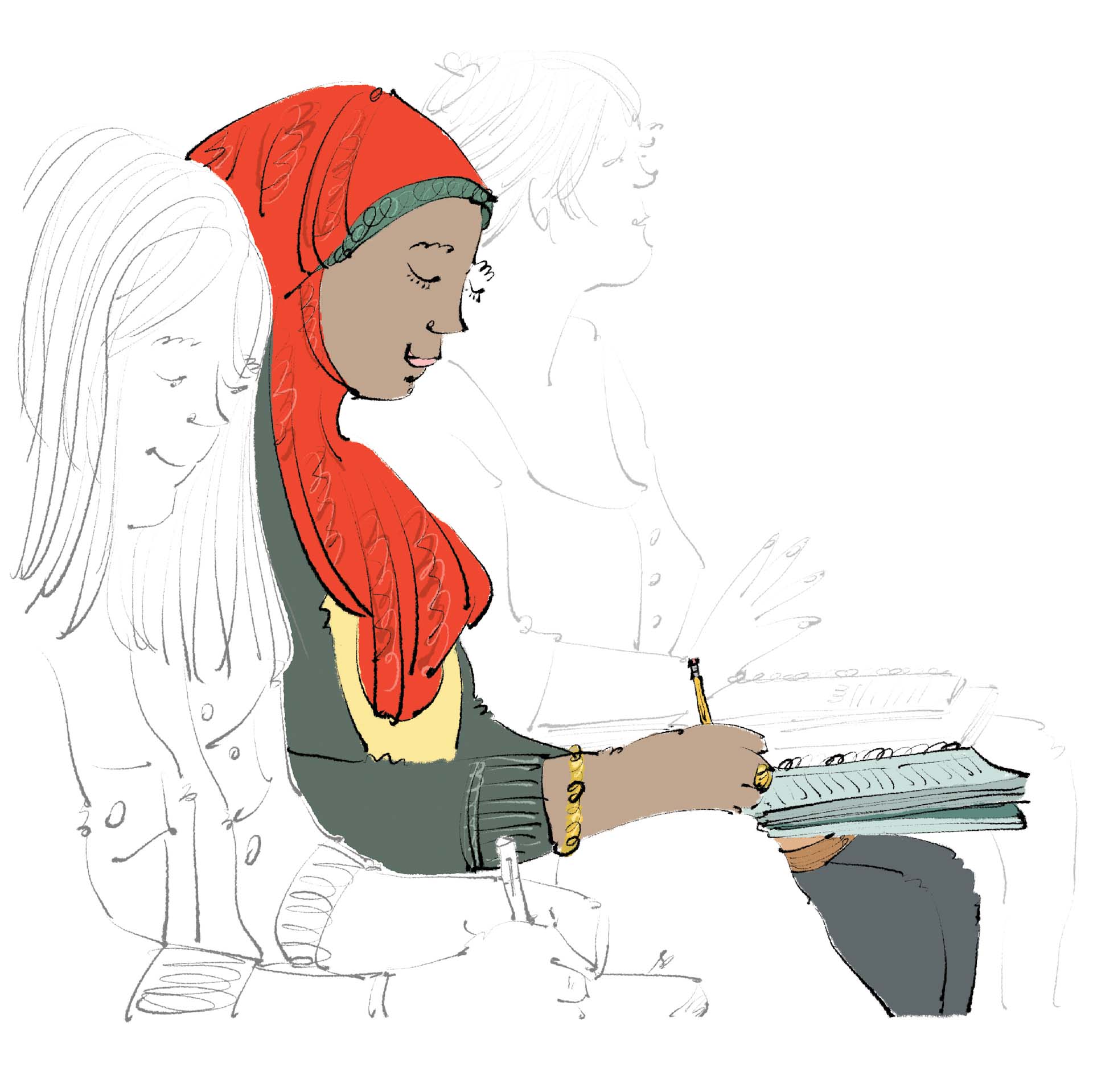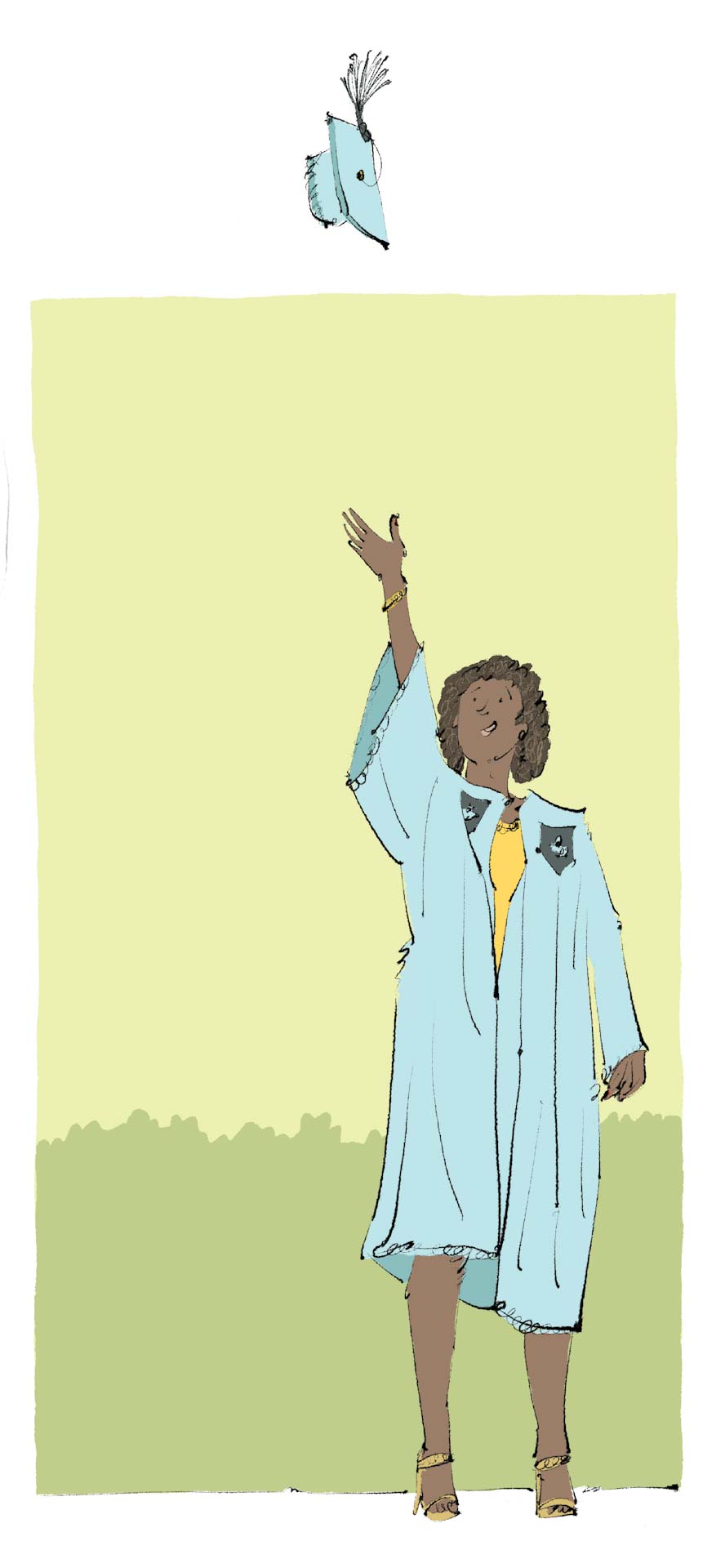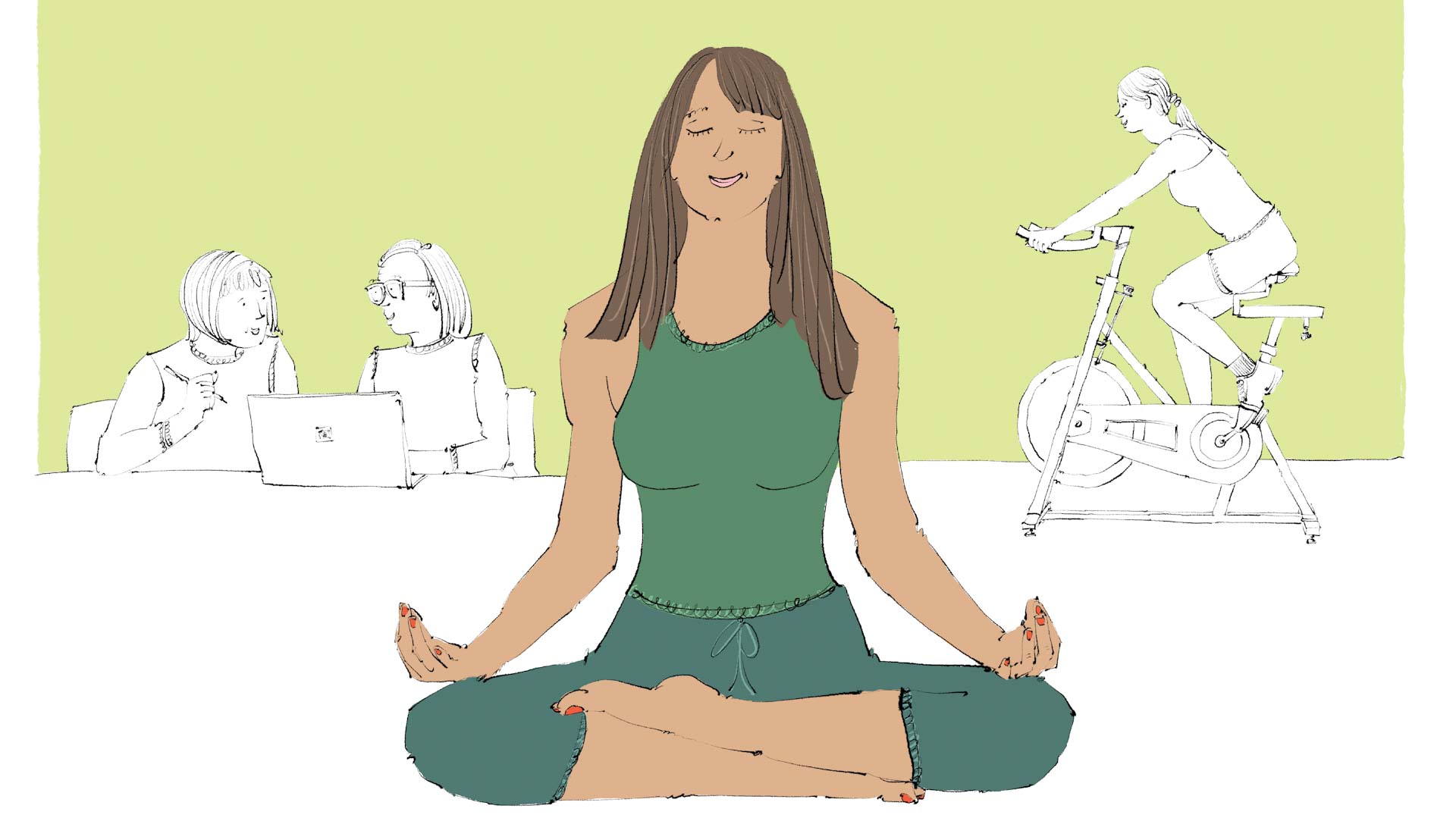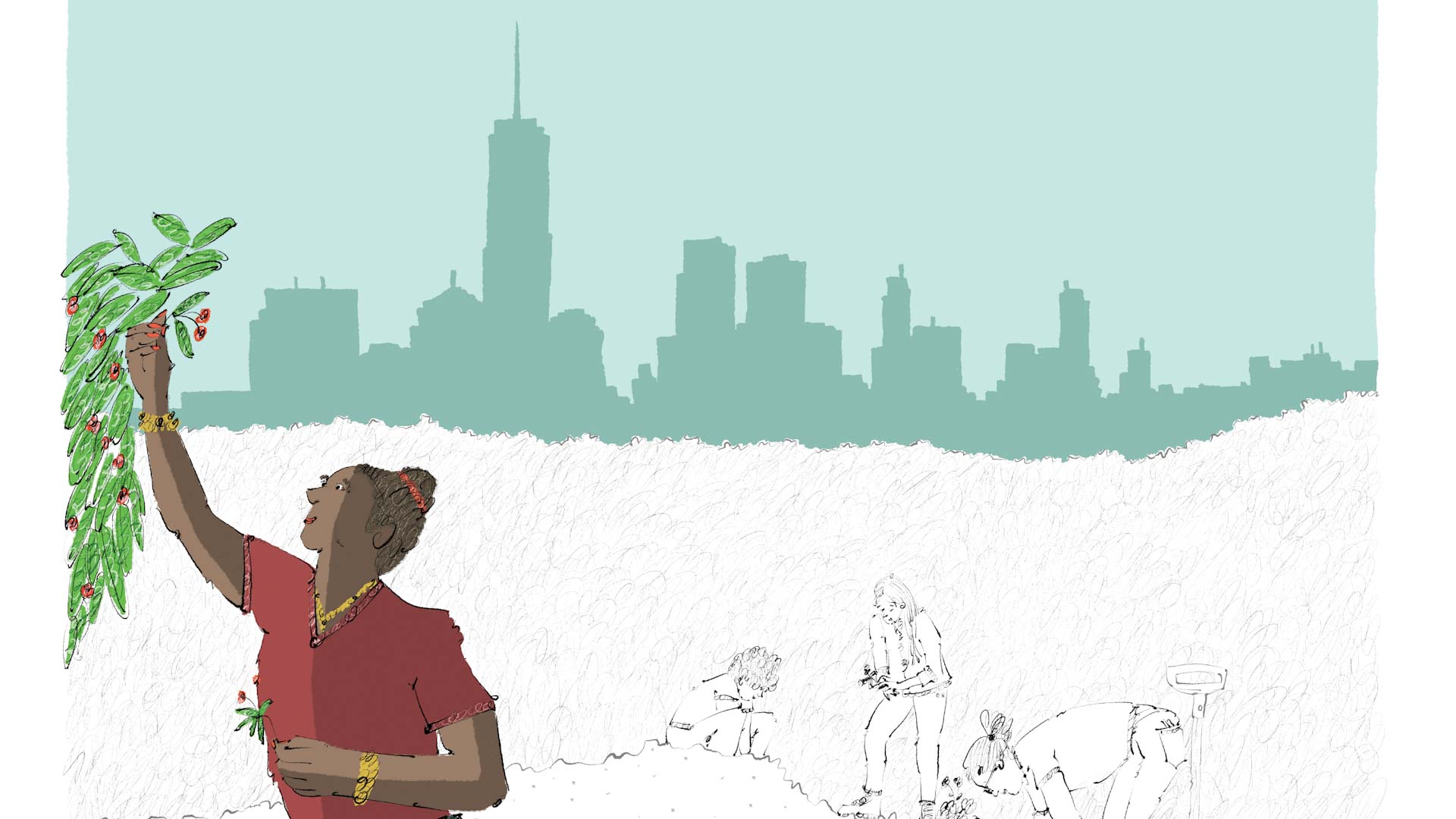
On February 9, 2018, in the grandeur of Riverside Church and with the formality an inauguration merits, President Sian Leah Beilock made clear the hopes and aspirations for her time at Barnard, not the least of which was to raise the College’s eminence in math, science, and technology to parallel its renown in the arts and humanities.
“I am a scientist, by training and by nature, and that colors how I approach everything. I crave data; I crave trials; and I crave testing, evidence, and examination,” she said. Later, in a nod to Barnard’s fundamental ties to the liberal arts, she added, “It is this link, between our renown in the liberal arts and our bold moves toward new modes of thinking, that will serve our students well into the future.”
Five years later, many of the goals she put forth have been realized — in bricks and mortar as well as in ideas.
Growing STEM in Bricks and Mortar
In her remarks, Beilock said that she wasn’t the first president to emphasize the importance of fostering women in science; that credit goes to Barnard’s second president, Rosemary Park. Park advocated for the College to have a science lab of its own in the early 1960s.
Today, nearly 100,000 square feet of programmable space is under construction at the Roy and Diana Vagelos Science Center; Beilock has metaphorically and literally laid the foundation for growing STEM disciplines. Also known as the R&D Science Center, the renovated space will be the physical manifestation of aspiring with perspective.
Rather than tearing down an old building and replacing it with a new one, the plan is a massive exercise in “circularity,” transforming 45,000 square feet of programmable space at Altschul Hall to provide additional space for the Biology, Chemistry, Environmental Science, and Physics & Astronomy departments as well as establish new space for the Neuroscience & Behavior and Computer Science departments. And rather than turning its back on its neighbors, the building includes a pronounced glass entrance on Claremont Avenue that will activate the quiet street with young scientists on their way to class.
Much of the effort was made possible in large part by a $55 million gift, the College’s largest, from Roy and Diana Vagelos. They were joined in the fundraising effort by Daphne Recanati Kaplan and Thomas S. Kaplan P’24, Cheryl Glicker Milstein ’82 P’14 and Philip Milstein CC’71 P’14, and many generous others who together raised more than $240 million to make the project a reality.
Growing STEM in Ideas
In the years since her inaugural address, the sciences have indeed expanded. The Department of Neuroscience & Behavior, one of the College’s most popular programs, has grown by 50% to more than 100 majors since 2019. The College has also increasingly incorporated STEM curricula and programming into its liberal arts education, providing students with interdisciplinary knowledge and skill sets that they can carry beyond Barnard.
Young women interested in the sciences are choosing Barnard more than ever before in the College’s 132-year history — 35% of the Class of 2022 were STEM majors, compared with about 26% nationally. Among Black, Latinx, and Indigenous scholars from the same class year, who are significantly underrepresented in the field, 26% majored in STEM at Barnard. These statistics exemplify the College’s commitment to establishing itself as a leading educational institution in both STEM and the arts.
The mission continues to be to help students develop the intellectual drive required to excel, with an eye toward the emergence of new fields, new ideas, and new technologies. In the fall of 2021, Beilock announced the Barnard Year of Science, an initiative to celebrate all things related to STEM at the College.
That same year, Beilock recruited BJ Casey, a world leader in the field of developmental neuroscience and now the College’s Christina L. Williams Professor of Neuroscience. Pulitzer Prize-winning author Jhumpa Lahiri ’89 joined the faculty in the fall of 2022 as the Millicent C. McIntosh Professor of English and director of the Creative Writing Program, underscoring the College’s ongoing commitment to the arts as well as the sciences.
Unification for Transformation
President Beilock made clear from the start that making a Barnard education an inclusive experience and positioning every student for post-graduate success would be top priorities. In service of those goals, Beilock employed an ethos of unification to key initiatives, reframing College resources, integrating various services for easier access, and exploring ways to best leverage Barnard’s relationship with Columbia University.
The results have become a meaningful, powerful aspect of the Barnard College experience. Specifically, Beilock developed Access Barnard, Beyond Barnard, and the 4+1 Accelerated Pathways graduate degree program.
Access Barnard, which launched in fall 2020, was designed to better serve underrepresented first-generation, low-income, and international students by bringing together various programming, including the Higher Education Opportunity Program (HEOP) and the Collegiate Science and Technology Entry Program (CSTEP), under one conceptual roof.
Beyond Barnard, which began in 2018, integrated Career Services, career development, student employment services, fellowship and pre-health-career advising, and funding for internships to create a comprehensive “one stop” resource. These initiatives have charted significant success. Ninety-one percent of the classes of 2018, 2019, 2020, 2021, and 2022 were placed in a job or graduate program six months after graduation.
The 4+1 Accelerated Pathways program combines an undergraduate liberal arts degree at Barnard with a master’s degree at Columbia in five disciplines: engineering, public health, social sciences, public and international service, and Russian, Eurasian, and Eastern European studies.
Feel Well, Do Well @ Barnard
Even as Beilock leaves Barnard, construction crews continue to move onto campus to realize her aspirations. During her inauguration speech, Beilock mentioned her research on women and girls, which she would later cite as the basis of her understanding of the direct link between wellness and success.
The Feel Well, Do Well @ Barnard campaign that Beilock launched in 2019 didn’t just promote physical and mental wellness but financial literacy as well. Literature about the initiative at the time recognized “disparities across campus for students, especially those having nondominant identities.” A culturally sensitive approach meant that top-down advocacy for health wouldn’t do.
Instead, in yet another unification process, the Beilock administration combined Barnard’s 36-year-old peer education program with Well Woman, a wellness initiative established in 1993. Combined, the two groups provided trained peer support for students during drop-in hours at a small room in Reid Hall.
But it was clear that the combined programs needed their own dedicated space. Thus, the linchpin of the effort will be the Francine A. LeFrak Foundation Center for Well-Being, which began construction this past winter, providing state-of-the-art spaces for financial fluency and wellness programs, a fitness center, and dance spaces. Under one roof in the lower level of Barnard Hall, initiatives addressing physical, mental, and financial wellness will offer students holistic support intended to propel success inside and outside the classroom.
Of New York
In the concluding remarks of her first important speech to the community that cold February day, President Beilock underscored how important Barnard’s relationship is to the city it calls home. “Barnard is of the city,” not just in it, she said.
To that end, Beilock launched STEAM in the City. With the support of the Stavros Niarchos Foundation, the College offers a training fellowship to Harlem grade-school educators facilitated by Barnard scholars in STEAM fields (science, technology, engineering, arts/architecture, and mathematics).
Using the city’s parks as classrooms, the effort trains teachers in how to teach their students outdoors and in concert with nature. There, they learn how to interact with local ecosystems and do science in innovative ways, such as beekeeping. They face challenges of how to solve problems in parks, such as Morningside Park, from measuring carbon dioxide levels to identifying trees.
In addition, teachers meet up at a makerspace, which holds state-of-the-art tools for design exploration. The effort doesn’t stop at the weeklong program; the College also follows up with the teachers to make sure they have the materials needed to carry out what they created in the studio.
Illustrations by T. M. Detwiler
